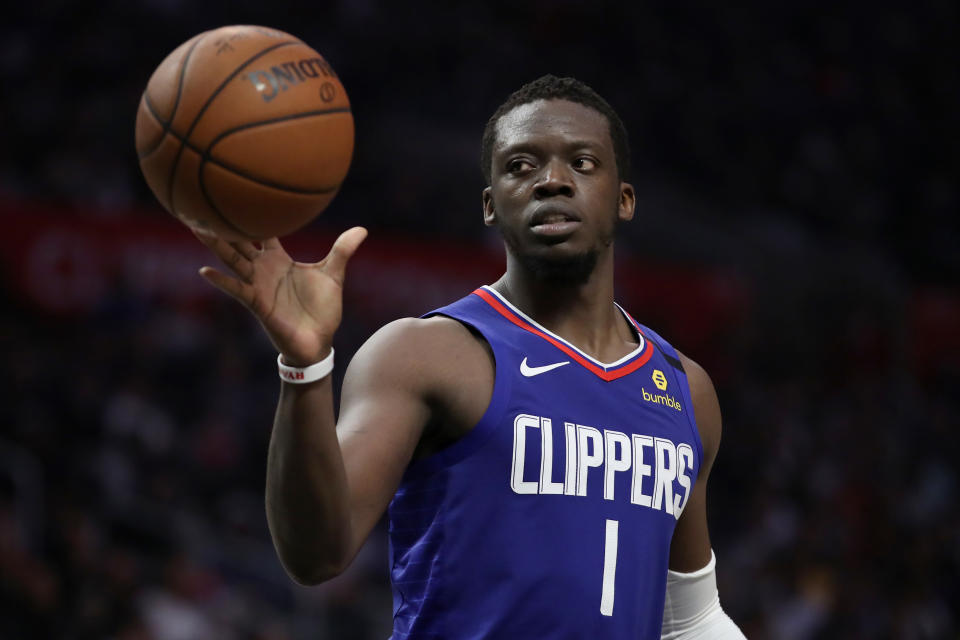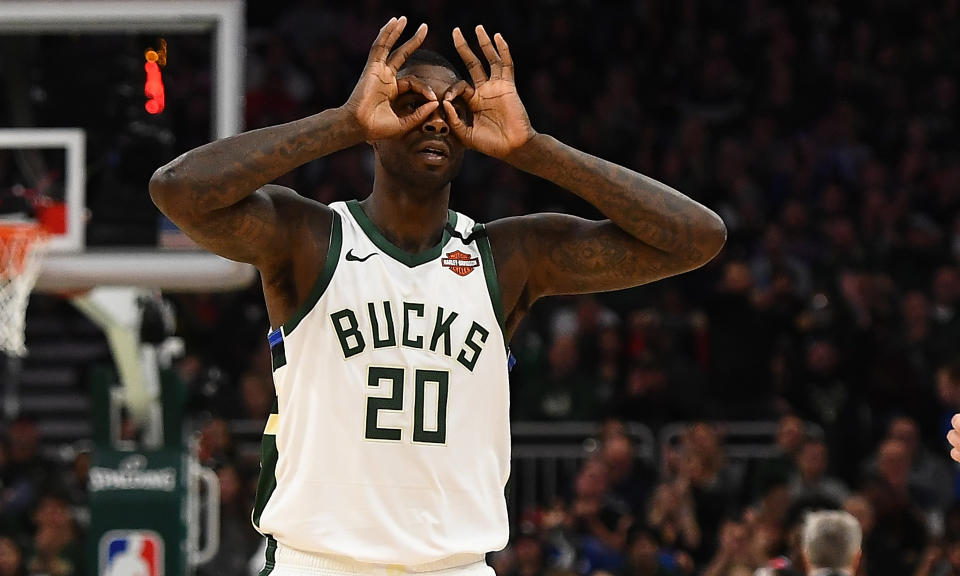Ranking the NBA's buyout signings from least to most impactful on the championship race
The deadline to sign NBA players who have been bought out of the remainder of their contracts is fast approaching, as teams have until March 1 to come to terms in time to make the playoff roster.
What is left of the already slim pickings is practically non-existent at this point. A handful of castoff guards that includes Trey Burke, Tyler Johnson and Isaiah Thomas is all that remains. Contenders are not likely to trust any of them in big playoff spots, which is really the only reason to sign them.
Evan Turner has yet to play in Minnesota since being traded to the Timberwolves earlier this month, even receiving permission to work out with the Los Angeles Clippers pending his buyout, according to Yahoo Sports NBA insider Chris Haynes. The former No. 2 pick would be the most attractive player on the market, having helped playoff teams in Boston and Portland before landing in Atlanta.
Teams were also holding out hope that Moe Harkless might be bought out after being traded from the Clippers to the New York Knicks, but he intends to finish out the final year of his contract with his hometown team, according to the New York Daily News’ Stefan Bondy. The Charlotte Hornets and Detroit Pistons could continue their purges, unleashing Bismack Biyombo or John Henson.
The history of buyout contributors to contending teams is not a long one. Peja Stojakovic is the best-case scenario. He joined the Dallas Mavericks on their 2011 title run, providing important minutes in the Western Conference playoffs before appearing sparingly in the Finals. It may not be the norm, but Derek Fisher and Boris Diaw have also proved that buyouts can be beneficial.
With that in mind, here is a ranking of the handful of players who negotiated their release from lottery-bound teams to join a contender, in order of least to most likely to make a difference:
5. Michael Kidd-Gilchrist, Dallas Mavericks
Kidd-Gilchrist fell out of the rotation on the Charlotte Hornets, which is all you really need to know. Charlotte is finally embracing a rebuild, and he no longer fits the plan, but you can bet Michael Jordan’s Hornets would have played him more than 160 minutes over 12 games if they thought he could have helped a team that was sniffing the Eastern Conference’s final playoff spot for a time.
Injuries and an inability to ever find a jump shot led the former No. 2 overall pick to fall well behind comparisons to a host of more talented wings drafted behind him, including Bradley Beal one spot later. Once a dominant defender, he is still a plus on that end, just not enough to justify his offensive limitations. He is a 28 percent career three-point shooter, and that is a non-starter in today’s era.
Mavericks coach Rick Carlisle may consider throwing Kidd-Gilchrist for a spell opposite the West’s plethora of elite wings or as a switching big against the many elite pick-and-roll operators if they are getting torched by either. But the last thing Dallas wants is anyone clogging Luka Doncic’s space.

4. Reggie Jackson, Los Angeles Clippers
It is difficult to tell exactly where Jackson fits into the Clippers’ playoff rotation. They are loaded with ball-handlers and ball-stoppers already, and Jackson gives them little if anything beyond that. Respectively, Lou Williams and Patrick Beverley are far better options offensively and defensively.
The biggest win for the Clippers in signing Jackson was keeping him away from the Lakers, who he no doubt could have helped in the capacity currently juggled by Rajon Rondo and Alex Caruso.
Jackson did fill a reserve role well with the Oklahoma City Thunder, but his inability to dial back his offense and defend anywhere close to a high level led veterans to punch his ticket to Detroit. He has been no better untethered on the Pistons. Players have a way of falling into line behind LeBron, and the Clippers will hope he does the same behind Kawhi Leonard and his friend Paul George.
Could Jackson answer the bell in an instance when Clippers coach Doc Rivers calls on a small-ball rotation with two guards around Leonard, George and Marcus Morris? It is possible. He has won playoff games before. It just seems more likely that Jackson’s defensive woes could cost them.
Come to think of it, maybe they should have let him sign with their L.A. rival.
3. Markieff Morris, Los Angeles Lakers
More than anything, the Lakers needed bodies, and Morris is a burly one. The fit is a little strange, given that the Lakers are more stacked with bigs than they are ball-handlers, but Morris is an upgrade over Jared Dudley (and Kyle Kuzma, depending on the night) and more versatile than either Dwight Howard or JaVale McGee. Plus, it is always good to have a Morris twin on your side.
Markieff brings more toughness to a team that already owns the league’s fifth-stingiest defense, playing almost entirely as a power forward or center throughout his career. Theoretically, Lakers coach Frank Vogel could play him in a monstrous and fairly versatile frontcourt alongside both LeBron James and Anthony Davis, but they might have difficulty keeping up with quicker wings — on the Houston Rockets and Los Angeles Clippers, especially. More likely, Morris will serve spot duty behind both James and Davis, providing a valuable bridge between their short stints of rest.
Morris has been an inconsistent if average shooter for most of his career, but he shot close to 40 percent on more than four three-point attempts per game for the Detroit Pistons through this season’s first 44 games — by far his best output. With so much focus on James and Davis, the opportunities to shoot in L.A. could be more bountiful than at any other stop in his nine seasons.
A playmaking guard would have been more helpful, but in the absence of any of those, Morris should still be beneficial if he can adjust to a minimized role — something he has never done.
2. DeMarre Carroll and Jeff Green, Houston Rockets
The Rockets scooped up a pair of buyout guys, adding Carroll and Green with their last two roster spots and foregoing a traditional big in a full embrace of small ball. Both fit Houston’s requirements of positional versatility and shooting range, albeit several shades grayer than mainstay P.J. Tucker and the recently acquired Robert Covington. If you are looking to peg what the Rockets can expect, this does it well: They are below Danuel House and above Thabo Sefolosha on the depth chart.
Again, options are nice, especially on a roster whose success will almost entirely rely on the ability of supporting cast members to convert 3-pointers. Rockets coach Mike D’Antoni has plenty of numbers to call now to avoid another string of 27 consecutive missed triples in a do-or-die game.
Neither Carroll nor Green has been an above-average shooter for some time, but James Harden and Russell Westbrook create more space. Without a defender within four feet last season, Carroll was at league average from distance and Green was slightly better, per Second Spectrum.
Consistency has been the biggest question mark for both, especially on the defensive end. They will do little to elevate Houston’s middling defense, but they are at least serviceable when engaged. Presumably they will be in the playoffs, when they could be auditioning for the final contracts.
Either could swing a playoff game in the right spot. Just look to Green’s 19-point outburst in Game 7 of the 2018 Eastern Conference finals. That is all you ask from a buyout, and Houston got two.

1. Marvin Williams, Milwaukee Bucks
Boston Celtics point guard Kemba Walker probably knows Williams better than anyone in the NBA, and Walker had been trying to recruit his friend and former teammate to join him for weeks leading up to his buyout earlier this month. He was legitimately taken aback by the news that Williams had chosen the Bucks, which tells you how much Walker values what the veteran brings to the table.
Williams remains capable at 33 years old, a testament to his staying power since falling short of expectations as the No. 2 overall pick ahead of Deron Williams and Chris Paul in 2005. He was miscast early in his career — a floor-spacing forward and versatile defender before they became en vogue. Williams can still do both as a stretch four and occasional small-ball center, which fits nicely into the many lineups the long-limbed Giannis Antetokounmpo makes possible for Milwaukee.
Williams has yet to find his stroke in Milwaukee, but it will come. He has shot better than 40 percent on corner 3-pointers in four of his past six seasons, including 44.2 percent this season, and just under that clip the other two years. That is practically all the Bucks will be asking of him on offense. Milwaukee generates good looks for everyone, especially when Antetokounmpo shares the floor, and the back-to-back MVP favorite will rest sparingly in the playoffs. One more shooter never hurts.
Defensively, Bucks coach Mike Budenholzer has one more body to throw at opposing stretch bigs, like a Mike Scott against the Philadelphia 76ers or Kyle Kuzma in a potential Finals matchup with the Los Angeles Lakers. The 6-foot-8 Williams has good hands, understands positioning and competes throughout possessions. It is a luxury for the Bucks to have someone who can slot in for Ersan Ilyasova without losing a thing. They can ride the hot hand, as if they can get any hotter.
More from Yahoo Sports:

 Yahoo News
Yahoo News 

